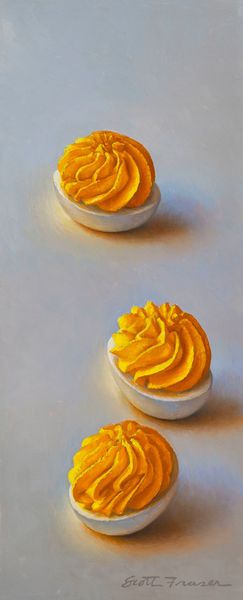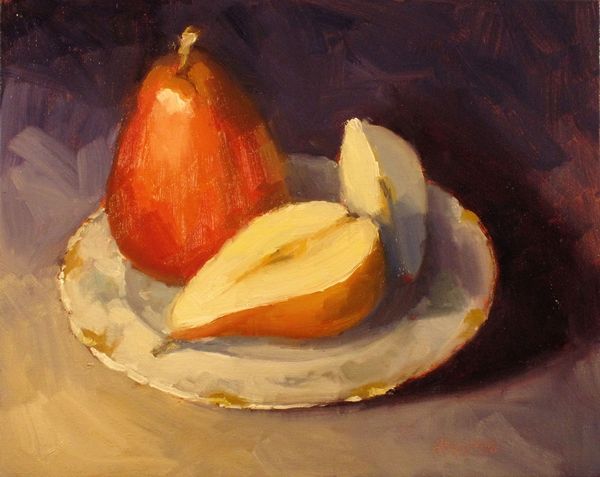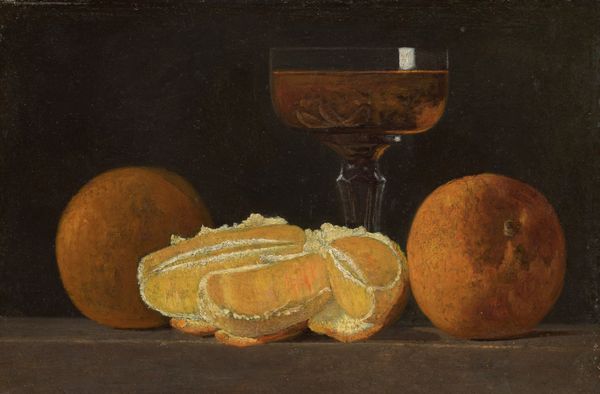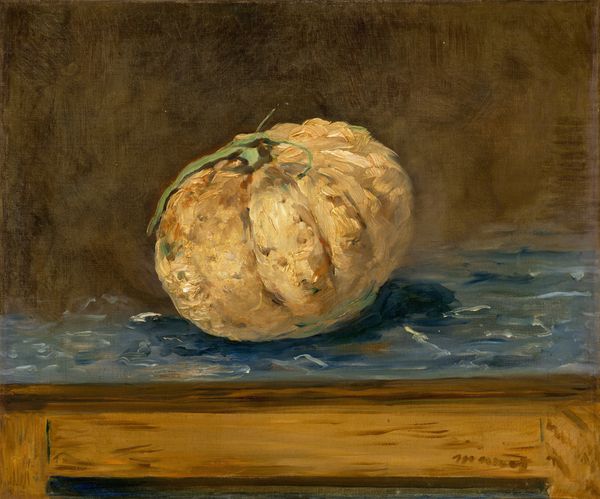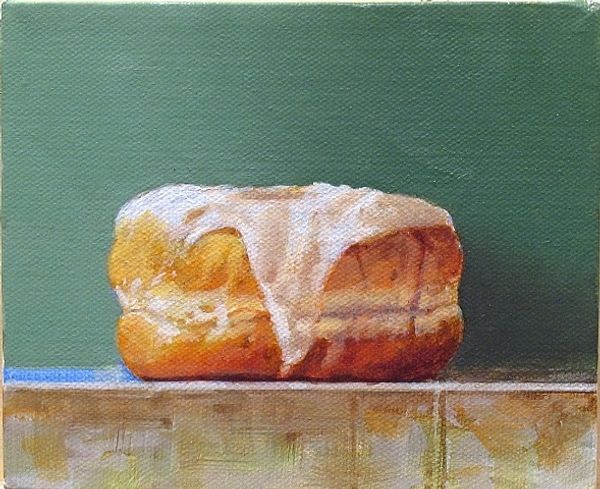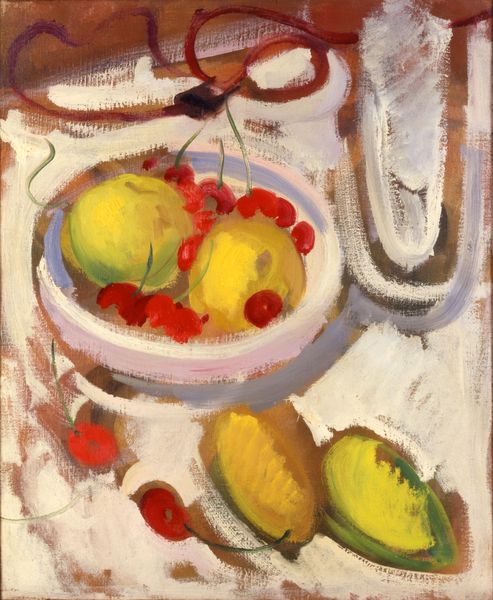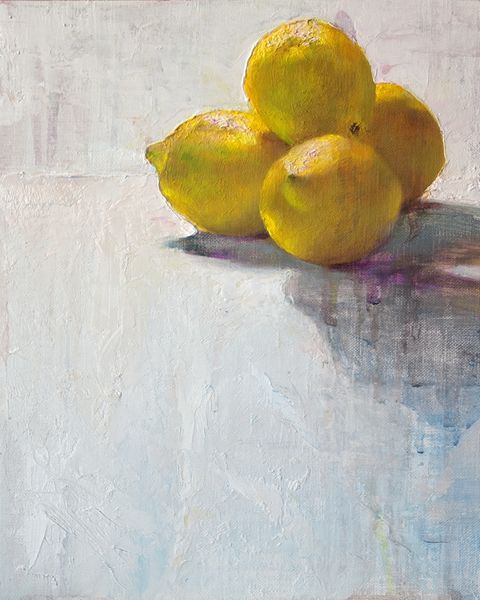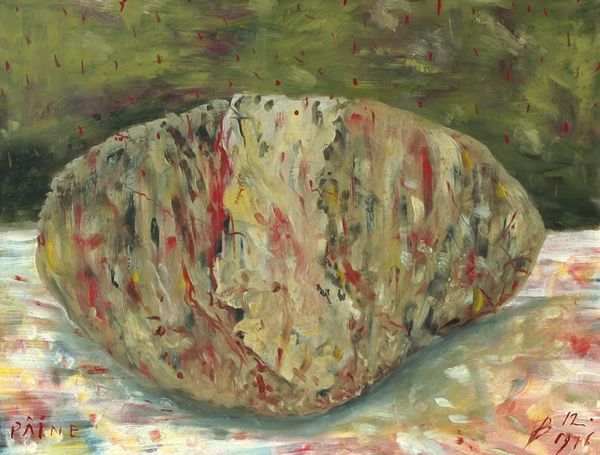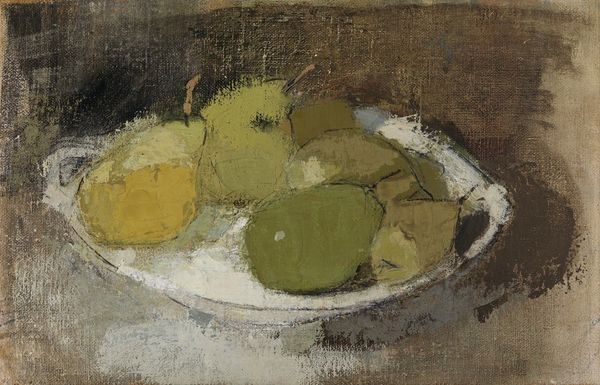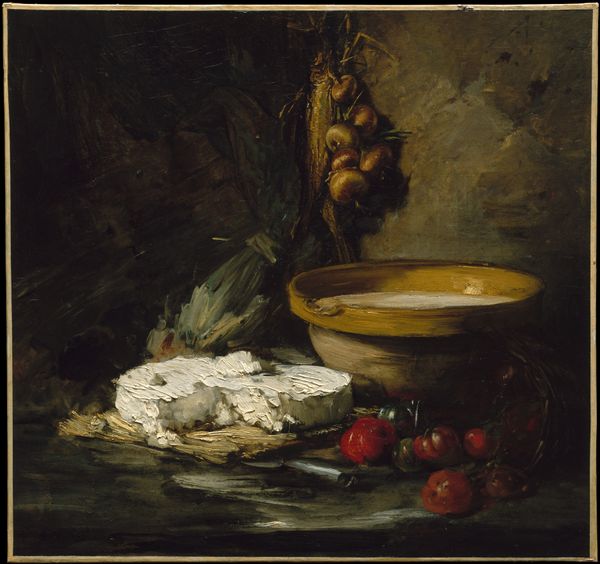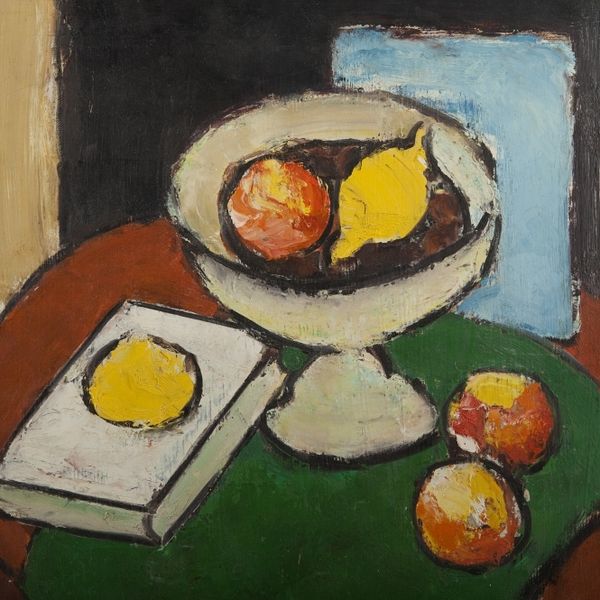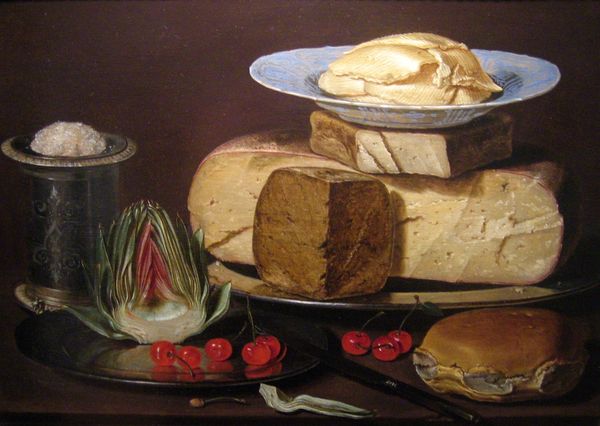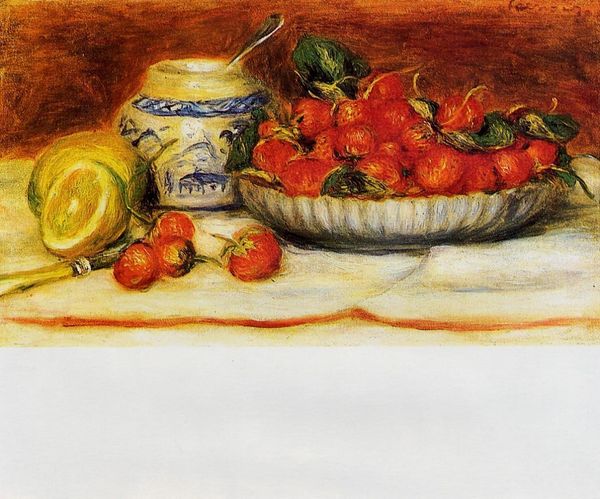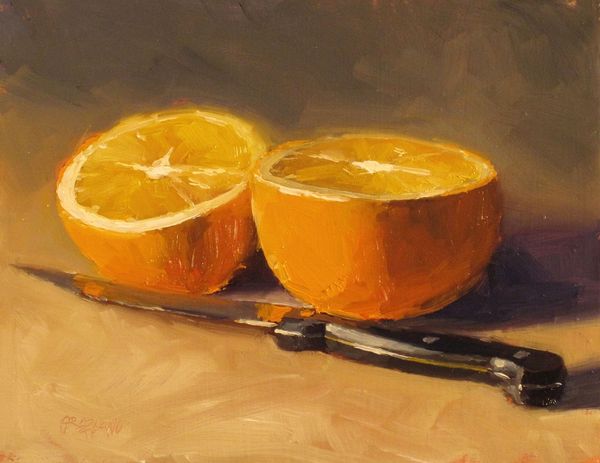
oil-paint, impasto
#
16_19th-century
#
french
#
oil-paint
#
oil painting
#
impasto
#
realism
Dimensions: overall: 50.2 x 61 cm (19 3/4 x 24 in.) framed: 68 x 78.1 x 7.6 cm (26 3/4 x 30 3/4 x 3 in.)
Copyright: National Gallery of Art: CC0 1.0
Editor: So, this is Antoine Vollon’s *Mound of Butter*, painted sometime between 1875 and 1885. It’s oil on canvas, and you’ve got this striking sculpture of butter as the main subject, next to some eggs. What strikes me is the sheer opulence, but it also feels very... grounded. What do you see in this piece? Curator: I see a provocative commentary on the politics of consumption in late 19th-century France. Vollon painted during a period of dramatic social and economic upheaval. Think about it: butter, seemingly so simple, can represent privilege and access. It wasn't a staple for everyone. Editor: Ah, so the painting becomes more than just an appealing still life. Curator: Exactly! Consider how Vollon renders the butter with such tactile, almost sensual brushstrokes, while the eggs, symbols of potential and sustenance, are relegated to the periphery. What statement might Vollon be making about the accessibility of basic resources, or perhaps the decadence of the bourgeoisie? The *Mound of Butter* reframes the domestic sphere as a site of complex negotiations between need, desire, and societal structure. How does the painting's focus on materiality and everyday objects challenge traditional academic painting? Editor: It definitely shifts the focus from grand historical narratives to the here and now, the things people eat and use. Did Vollon face any criticism for this unusual choice of subject? Curator: Possibly. By focusing on something so mundane, he’s implicitly critiquing the art world's obsession with the elevated and idealised. He seems to suggest that value, both artistic and economic, is constructed and not inherent. This perspective connects to broader philosophical discussions on materialism and social equity prevalent at the time. Editor: That’s really made me think differently about still life painting! Curator: Me too. It is interesting how a painting of butter can open up broader dialogues about economic inequality and artistic conventions, even today.
Comments
No comments
Be the first to comment and join the conversation on the ultimate creative platform.
